- November 14, 2025
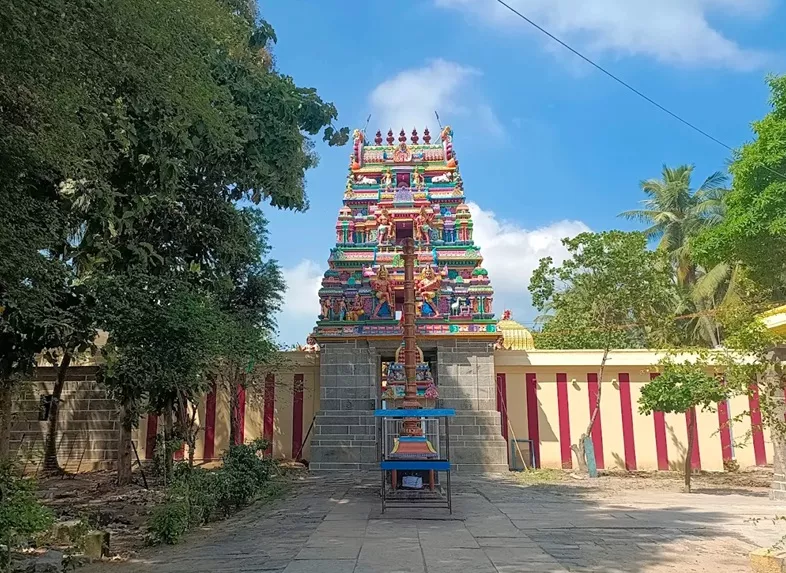
| Shiva Sthalam Name | Arulmigu Soundareswarar Temple |
|---|---|
| Moolavar (Presiding Deity) | Soundareswarar [Soundaryeswarar], Suyampirakasa Eeswarar (Self-Manifested God) |
| Ambal/Thayar (Consort) | Thiripurasundari |
| Sthala Vriksham (Holy Tree) | Punnai Tree (Calophyllum inophyllum) |
| Theertham (Holy Water) | Karunya Theertham, Sengazhuneer Theertham |
| Puranic Name | Thirunaraiyur |
| Town | Thirunaraiyur |
| District | Cuddalore |
Thennādudaiya Sivanē Pōtri
Ennāttavarkkum Iraivā Pōtri
The Arulmigu Thiripurasundari Ambal Sametha Soundaryeswarar Temple in Thirunaraiyur, located in the Cuddalore district of Tamil Nadu, is one of the most important shrines in the Saiva religion. Not only does this temple possess a self-manifested Shiva Lingam (Swayambu), but it is also famous as the sacred place housing the Polla Pillaiyar shrine, which revealed the Thirumurai hymns. It is the 33rd among the Thevaram-glorified Shiva Sthalams located on the Northern bank of the Cauvery river (out of 276 such shrines).
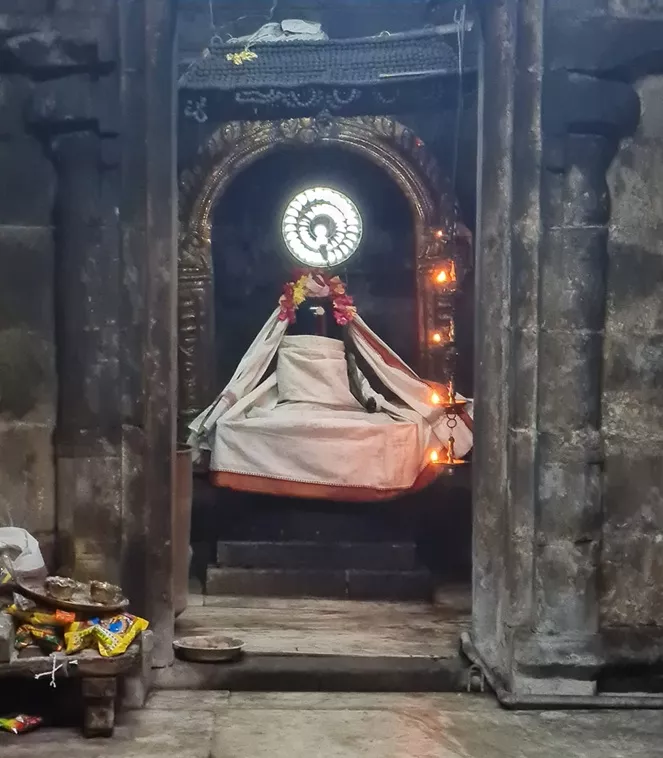
According to the Puranas (legends), a Gandharva (celestial being), while traveling in the sky, accidentally dropped a fruit seed which fell on the Sage Durvasa who was in deep penance. Disturbed from his meditation, the enraged Sage cursed the Gandharva to be born as a crane (Narai). The Gandharva cried out for redemption, and the Sage instructed him to perform daily abhishekam (ritualistic bathing) to Lord Soundareswarar in this shrine using the holy water from the Ganges River in Kasi (Varanasi). Following this, the Gandharva, in the form of a crane, flew to Kasi, carried the Ganges water in its beak, performed the abhishekam, and regained his original Gandharva form. Since the crane (Narai) came and worshipped, the town came to be known as Thirunaraiyur.
One day, during a severe storm and heavy rain, the crane struggled against the wind, and its wings broke and fell. As the drops of the holy water in its beak fell to the earth, they formed a pond called Karunya Theertham (Theertham of Compassion). This pond is located outside the temple. The place where the crane’s wings fell was named Siragizhandhanallur (The place where wings were lost), which is 3 km away from this shrine and houses the Gnanapureeswarar Temple (a Thevaram Vaipu Sthalam, a lesser-known shrine mentioned in the hymns).
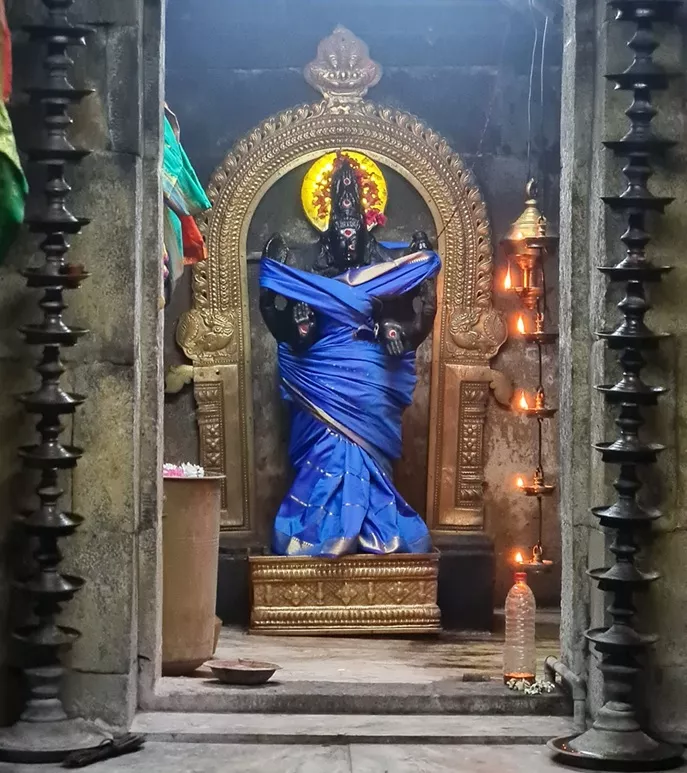
The primary specialty of this shrine is the self-manifested Vinayaka (Ganesha) known as Polla Pillaiyar. “Polla” means “un-chiseled” or “un-sculpted”. This temple is considered the First Army Camp (Padaiveedu) of Lord Vinayaka, similar to the six Padaiveedus of Lord Muruga. The other Padaiveedus for Vinayaka are said to be: Thiruvannamalai, Virudhachalam, Thirukadaiyur, Trichy Uchchi Pillaiyar (or Madurai Alala Sundara Vinayaka), and Pillaiyarpatti Karpaga Vinayaka. Worshipping Vinayaka here is said to grant special blessings.
Another unique feature is the Vimana (tower above the sanctum) of the main deity, which is shaped like a half-moon with two Kalashams (pots). This is symbolic of Lord Shiva having integrated Shakti (the Divine Feminine) within himself. Additionally, the temple is special for having two Chandikeswarars in the same sanctum (one for the Moolavar Soundareswarar and one for Thirumoolanathar) and the presence of three Bhairavas in one place.
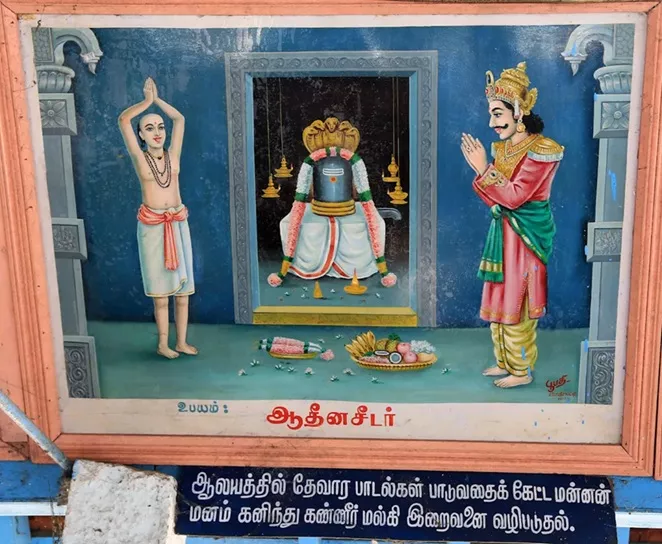
The Polla Pillaiyar of this shrine is celebrated as “Thirumurai Katiya Vinayakar” (Vinayaka who revealed the Thirumurai). A devotee named Ananthesar would perform daily puja and distribute the Naivedyam (food offering) to devotees. His son, Nambiyandar Nambi, was sent to perform the puja when his father was away. He waited, believing Vinayaka would eat the offering. When the Naivedyam remained untouched, he hit his head on the idol and wept, praying to the Lord. Pleased with his genuine devotion, Vinayaka accepted the offering and gave him a divine vision.
Later, when King Raja Raja Abhaya Kulasekara Chola tried to compile the Thevaram hymns, he did not know their whereabouts. Upon learning of Nambiyandar Nambi’s greatness, the king came to this shrine and prayed to Vinayaka. At that moment, a divine voice was heard, stating that the Thirumurai manuscripts were in the southwestern hall of the Chidambaram Natarajar Temple. Nambi and the King went to Chidambaram, recovered the manuscripts that were covered by an anthill, and compiled them into the Seven Thirumurais. To set the songs to Pan (tune/melody), they prayed to Lord Shiva at Thiru-Erukkatthampuliyur, and a divine voice directed them to a woman named Padini who was blessed with the tunes. She helped set the Thevaram verses to Panmurais. Due to his role in this, Polla Pillaiyar earned the name Thirumurai Katiya Vinayakar. Statues of Raja Raja Chola and Nambiyandar Nambi are placed opposite his shrine.
Nambiyandar Nambi’s own works, including Thiruvanthathi, Thirumummanikkovai, and Thirukkalambagam, were included in the 11th Thirumurai. Consequently, King Raja Raja Chola was praised as “Thirumurai Kanda Chozhan” (The Chola King who found the Thirumurai).
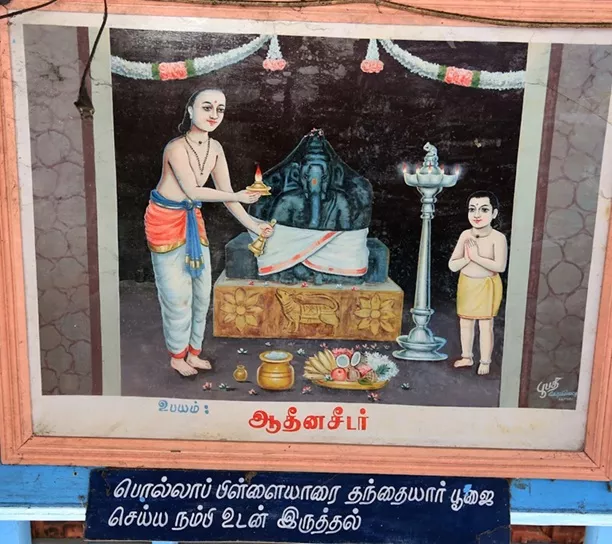
The temple entrance faces east and has a three-tiered Rajagopuram (main tower) that is 78 feet tall. Upon entering, there is a small Ganesha and Nandi Mandapam (hall); there is no flag post (Dwajasthambam). The temple, spread over 5.5 acres, features the Moolavar Soundareswarar in the form of a Lingam, facing east. In the circumambulatory path (Prakaram), you can find: Sri Subramaniar in the western corridor, Sri Gajalakshmi in the northwest, Sri Thirumoolanathar and Sri Chandikeswarar in the north, and the holy Punnai tree. In the northeast, there are shrines for Sri Bhairavar, the Sun and Moon, and the Navagrahas (nine planets). The Koshta Moorthams (deities in the niches on the sanctum wall) are Vinayaka, Dakshinamurthy, Lingothbavar, Brahma, and Durga. The shrine of Tripurasundari Ambal faces south and is located as a separate sub-temple in the outer Prakaram. There is also a shrine for Natarajar in the temple.
Saint Thirugnanasambandar, in his hymn, states that worshipping the Lord here will cleanse sins arising from speech, mind, and body, cure physical ailments, remove suffering caused by evil deeds, and make even Yama (the God of Death) fear at the time of death. The hymns sung by Thirunavukkarasar and Sambandar about this shrine are found in the 2nd Thirumurai. Devotees perform abhishekam to the Lord and Goddess and offer new clothes to fulfill their vows.
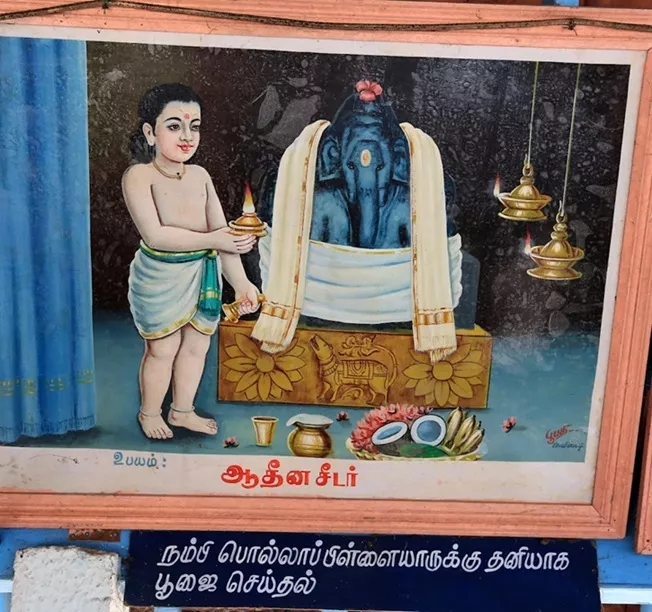
Arulmigu Soundareswarar Temple is open from 06:00 AM to 11:30 AM and from 03:30 PM to 07:30 PM. Special rituals are held on Pradosham days and festival days.
How to Reach the Temple?
The shrine is located on the route from Chidambaram to Kattumannarkoil via Kumaratchi, 17 km from Chidambaram and 8 km from Kattumannarkudi. Take the Chidambaram-Kattumannarkudi bus and alight at the Thirunaraiyur junction, from where the temple is a 1 km walk.
Nearby Thevaram Glorified Shrines:
Nearby Vaipu Sthalam (Lesser-known Shrine):
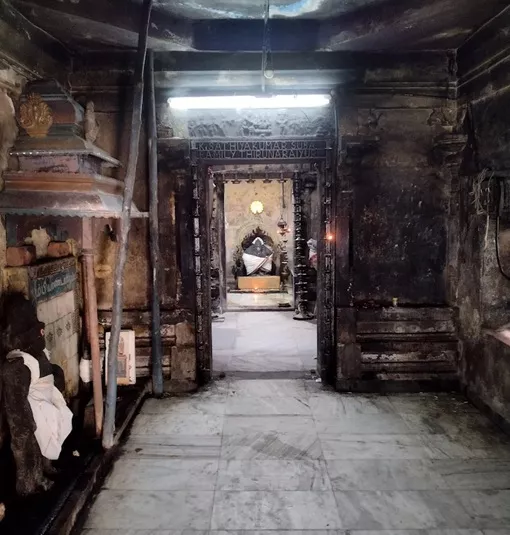
Arulmigu Soundareswarar Temple,
Thirunaraiyur Post,
Kattumannarkoil Circle,
Cuddalore District, PIN – 608303.
Contact Numbers: 📞 +91-94425 71039, +91-94439 06219.